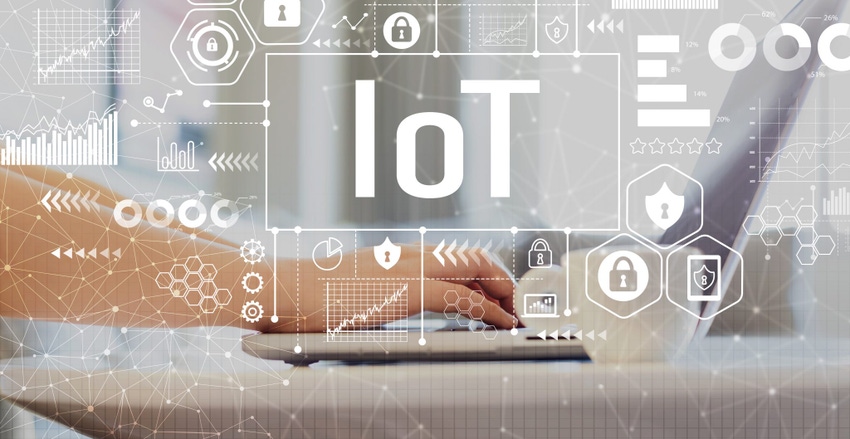Focus on quantifiable benefits and the technology's ability to solve critical business problems.
July 23, 2021

By Ariel Cruz

Ariel Cruz
Keeping track of things is hard. For a business, the problem might be monitoring goods in a warehouse, and ensuring that in-demand items are easily accessible. Or gauging and documenting the temperature of individual frozen fruit containers in transit. Or finding valuable items that have “fallen” off a truck.
Evolving Internet of Things (IoT) solutions are helping businesses tackle these long-standing challenges. While typically associated with cutting-edge innovations such as self-driving cars and smart medical implants, IoT capabilities are ideally suited to address more mundane tasks such as locating, identifying and monitoring assets of all types. Specifically, the integration of data-collecting sensors, location tags and beacons and cloud-based analytical platforms delivers a robust platform that can be applied to a range of real-time location and tracking scenarios.
For channel partners, these tools present a significant opportunity to expand their portfolios and add value to their customers.
Data, Connectivity and Analytics
The foundational capabilities of real-time location and asset-monitoring solutions comprise three pillars:
Data collecting sensors track the location of a truck and its cargo, monitor temperature and humidity within a container of medicine or gauge the level of fuel in a tank. Sensors range in size from a quarter to a suitcase and can be made of paper (RFID tags), enclosed in plastic or packaged in waterproof enclosures. Depending on the application, installation can be a complex process requiring specialized skills, or as easy as dropping a tag in a fridge or a glovebox.
Cloud-based analytical platforms derive insights from the collected data by leveraging capabilities such as geofencing, artificial intelligence, machine learning and pattern recognition. For example, if a truck strays from the route defined by geofenced borders, the platform issues an alert and specifies the truck’s location. If the driver of the truck behaves erratically or recklessly, or appears to doze off, AI-enabled video tools can issue alarms within the cab as well as to the fleet manager.
Wireless connectivity links data-collecting sensors and analytical tools. eSIMs (embedded Subscriber Identity Modules) are programmable chips that can be installed into any cellular radio device. The chips enable communication between that device and one or more wireless networks. While traditional SIM cards aren’t programmable and are tied to specific carriers, eSIMs can be programmed remotely to connect to multiple carriers based on rules (such as strongest signal first, switch to second carrier if first carrier fails), thereby delivering a key advantage.
X-Ray Machines and Wheelchairs
The “where’s my stuff” problem is keenly felt by the health care industry. Hospitals have long struggled to locate, identify and quickly access mobile clinical assets. These can include critical care equipment such as ventilators and MRI machines, or basic items such as wheelchairs and beds. One problem is theft. The combination of expensive items, often chaotic environments and lax oversight makes hospitals attractive targets, and medical equipment of mysterious origin regularly appears for sale on eBay.
While theft poses a concern, just finding things is perhaps a bigger issue. Nurses spend a significant portion of their shifts simply looking for equipment. Many resort to hoarding devices in hard-to-find spots to ensure their patients get the care they need. This results in additional equipment purchases and rentals and bloated inventories.
Asset Tags and AI Analytics
IoT-enabled location and asset-tracking solutions can help hospitals enhance inventory management, reduce costs and improve the quality of care. Data-collecting sensors and beacons integrated with existing video surveillance systems identify and monitor the location and movement of assets anywhere within a facility. Geofencing defines …
… specific borders to prevent assets from being moved from proscribed areas such as emergency rooms. An asset crossing a border alerts staff of the breach and specifies the asset’s location. AI-enabled video analytics track assets in motion, and identify and locate stationary assets, as well as track data on asset utilization and maintenance history.
Channel Partners Take Note
Whether for health care or other industries, IoT-enabled location tracking solutions offer an intriguing proposition to channel partners looking to expand and diversify their portfolios and develop strategic, value-adding relationship with their customers. How can they take advantage?
One imperative is to evaluate and reassess existing channel relationships. That might require working with new master agents and technology providers that have the right mix of IoT capabilities, and then going a step further to build rapport with the right IoT specialists. Developing insight into industry trends can help identify appropriate solutions and develop a focused go-to-market strategy, one that’s aligned with the channel partner’s existing customer base and target markets. Engaging early and often in the opportunity conversation, meanwhile, ensures that support teams have sufficient time to uncover pain points and articulate technology solutions to address them.
Perhaps most importantly, the customer conversation has to be related to return on investment. Rather than leading with whizbang technology, the focus should be on quantifiable benefits and the ability to solve critical business problems.
Ariel Cruz is VP of Channels at Claro Enterprise Solutions, which provides partners access to emerging digital technologies as well as proven capabilities in traditional products and solutions. It is part of América Móvil, an international provider of integrated telecommunications services, and was formerly known as Telmex USA until it rebranded as Claro in 2018. You may follow him on LinkedIn or @USClaro on Twitter.
You May Also Like
